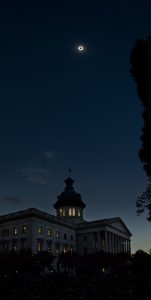
I’ve been discussing the limitations of language for some time, actually. If you stop on my home page at www.jimmyslens.com, the first image you see has the words, “There are some experiences for which there are no words.” That’s been my experience. In the English language, we tend to overuse certain words. “Awesome” is a prime example. Most events to which that descriptor are applied aren’t really awesome at all, but are as mundane as tap water. And then we witness a truly awesome event and there are no words adequate to the task. The language fails. Or, we’ll describe it as awesome and let it go at that. How does that single word express what you’ve just witnessed? How does it tell your emotional response?
Well, I’ve seen a few things that are awesome, truly awesome. And language fails completely. That is, perhaps, one reason I’m drawn to the visual image. If I can capture something in a photograph, it will likely come closer to what it was like than the words I could cobble together to describe it. Hence, a total solar eclipse. You can take your “awesome,” or “cool,” or “magnificent,” even and put them away because they don’t work in that circumstance. They simply aren’t strong enough.
I can talk about how the darkness hit suddenly when totality occurred, or the way the light was silver when the sun began to emerge from the other side. But mostly, the experience is contained in a few short moments when I aimed my eyes at the sun and unhanded my cameras and their triggers and stared into the glory that is our star. That is the image that is burned into my memory. It’s not so much the way I had to manipulate the cameras (my plans didn’t work out as far as my chosen spot or angle of view and though I had planned on setting the cameras so I wouldn’t have to adjust them at all during the actual eclipse, it turned out I needed to make the vertical panos you see here.).
But I looked up, and was struck at how large the sun was, streamers and all.
So why didn’t I use a long lens and fill the frame with the sun during its darkest moments? Why did I take the short lens route instead? Well, my thought process was this: I wanted a picture that would speak of a moment in time and space, that would offer to the viewer a bit of what it was like to stand in a particular spot and see this happen. I love those images of the sun, just the sun, filling the frame. The pictures of the solar prominences extending out into space, the streamers looking like a flowing fabric. But if you were to do an Internet search this instant, how many of those images would you find? Many, many. And if somebody asked you where a particular image was shot from, you could only tell by looking at the caption. The totality looks the same whether the photograph was made from Oregon, Wyoming, Illinois or South Carolina. I chose instead to pick a spot and let the location speak to the feeling of being there.
Instead of scientific, I chose emotional.
